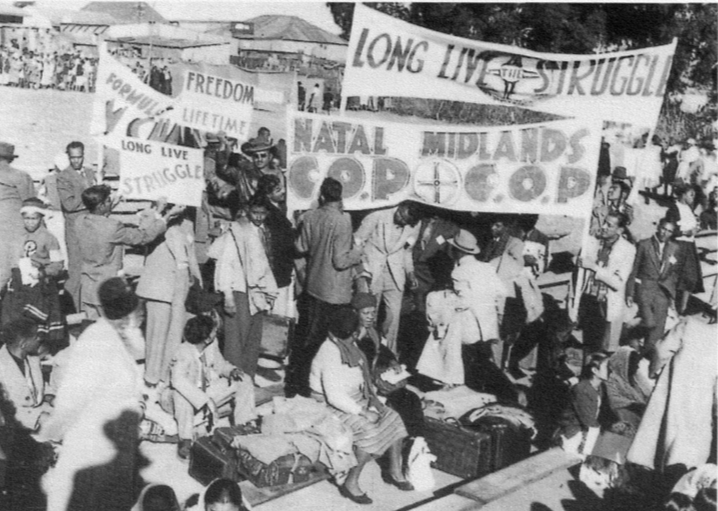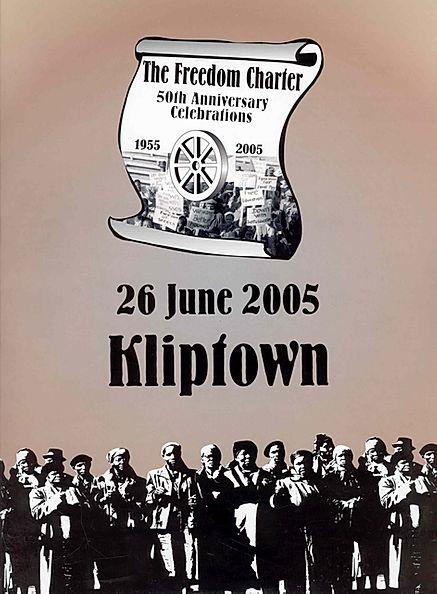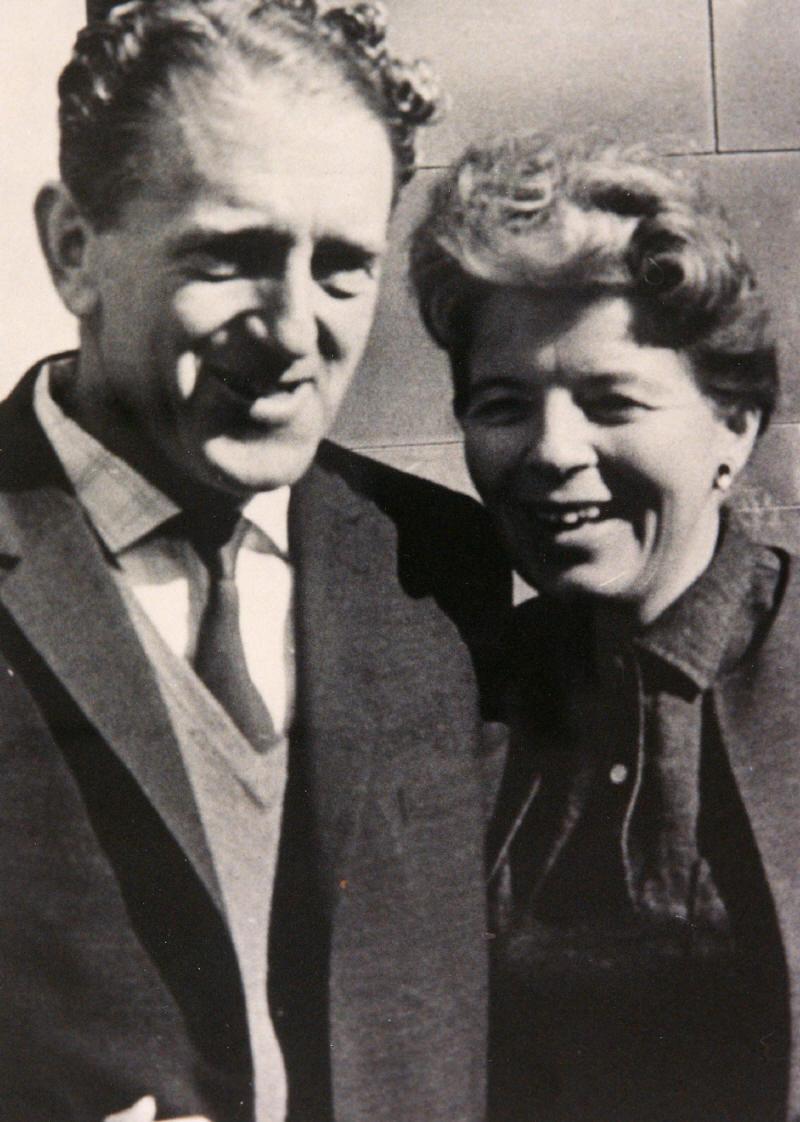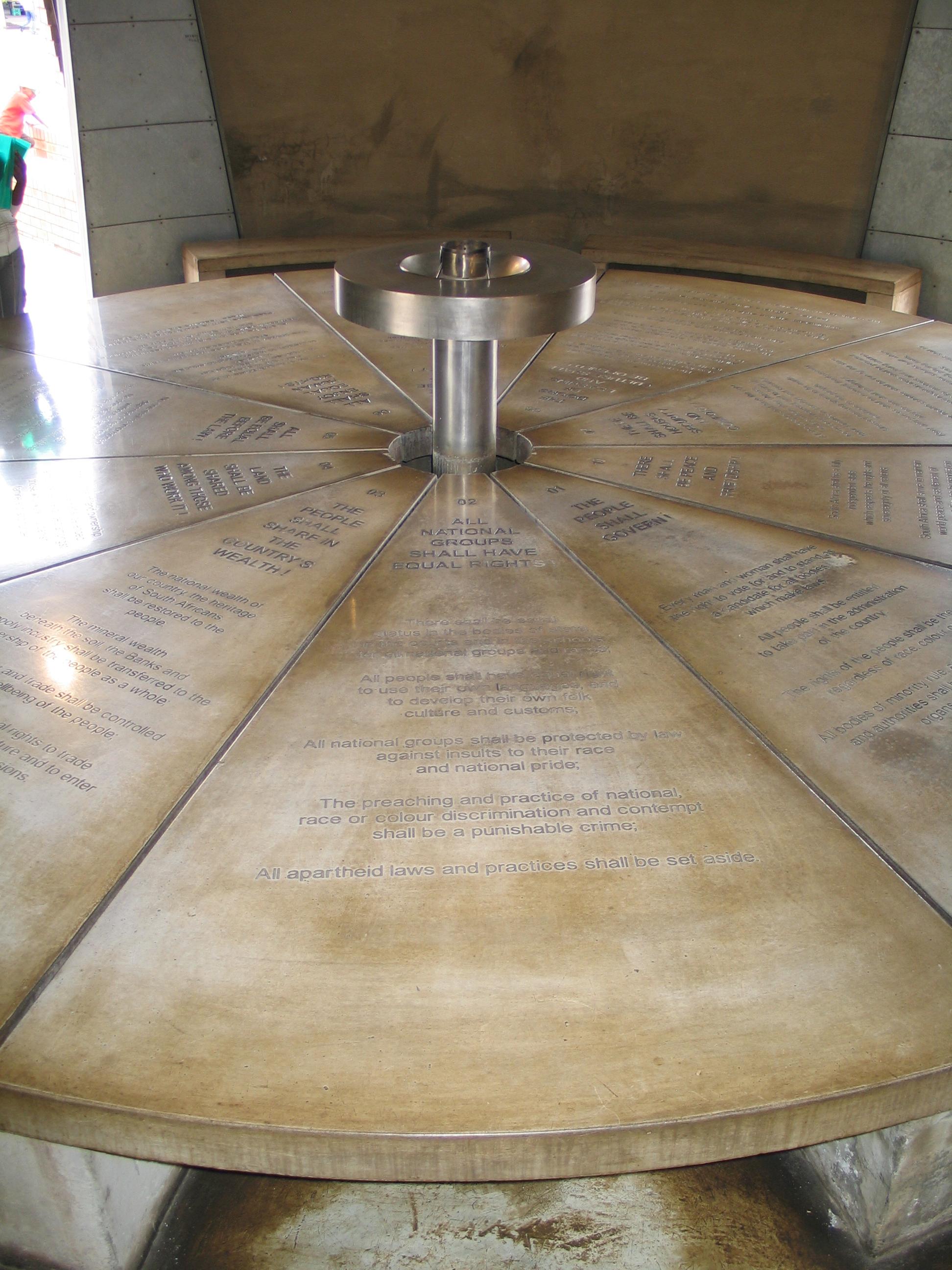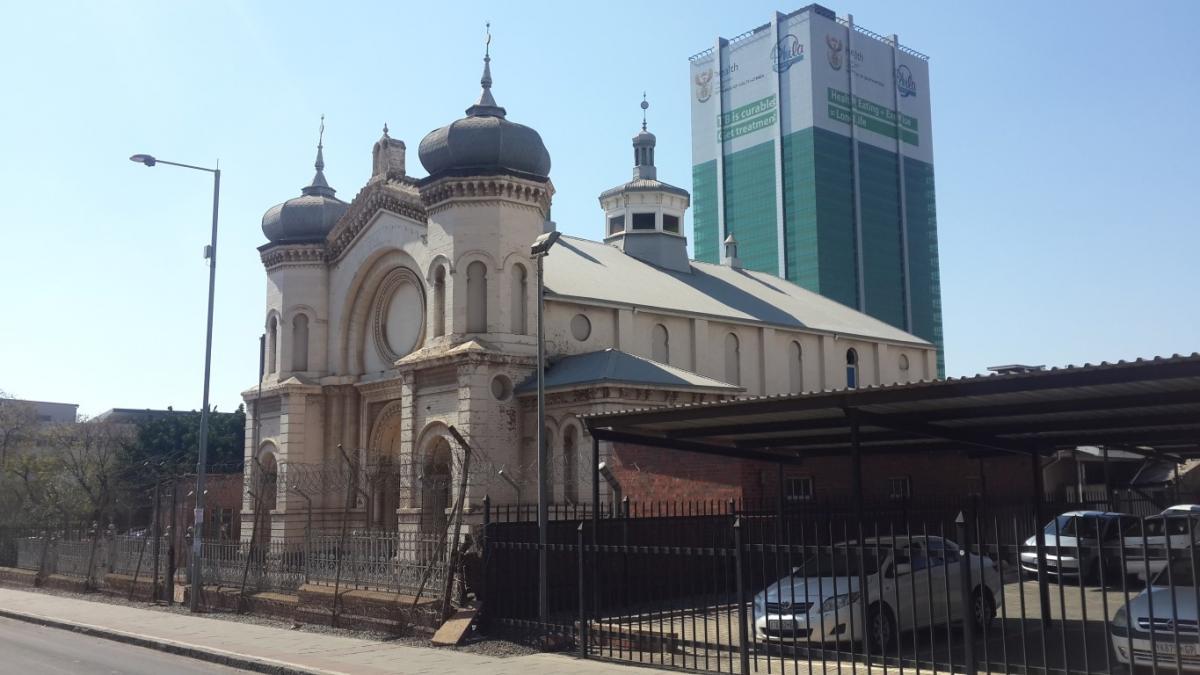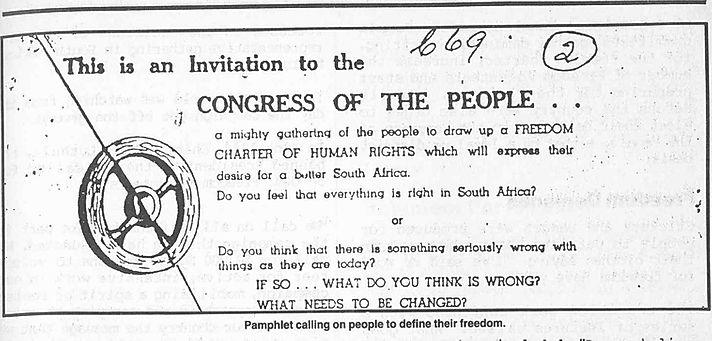
Disclaimer: Any views expressed by individuals and organisations are their own and do not in any way represent the views of The Heritage Portal. If you find any mistakes or historical inaccuracies, please contact the editor.
In the article below, journalist Lucille Davie unpacks the history behind the signing of the Freedom Charter. The article was first published on the City of Joburg's website on the 24 June 2005. Click here to view more of Davie's work.
Nelson Mandela was there. Walter Sisulu was there. Helen Joseph was there. Father Trevor Huddleston was there. So were 3 000 ordinary citizens, demanding a better life for all under a new, non-discriminatory dispensation.
It was on Saturday, 26 June, 1955, that people from around the country gathered on a dusty soccer field in the middle of Kliptown, to approve the Freedom Charter, in an atmosphere described by Nelson Mandela in his Long Walk to Freedom as “serious and festive”.
Scenes from the Congress of the People (via Restorica)
It was professor ZK Matthews, the African National Congress (ANC) Cape president, who, on returning in 1954 from a year as visiting professor at New York’s Union Theological Seminary, proposed the idea of the Freedom Charter.
He said: “I wonder whether the time has not come for the African National Congress to consider the question of convening a national convention, a congress of the people, representing all the people of this country irrespective of race or colour, to draw up a Freedom Charter for the democratic South Africa of the future.”
Pamphlets were printed and distributed around the country, urging people to submit their ideas for “the good life that they seek for themselves and their children”, for the charter. The pamphlet said that the charter would be a guide to “those singing tomorrows” when South Africans would live and work together in peace and harmony.
All the struggle organisations, including the South African Indian Congress, the South African Coloured People’s Organisation, the Congress of Democrats, and the ANC, would come together to form the Congress of the People (COP), the body that would write the charter and present it to the people.
50th Anniversary Celebrations Poster
Writing the charter
There are several interpretations of how the charter was written. Mandela says that the ANC branches contributed greatly to the writing of the charter, particularly the branches in Durban and Pietermaritzburg, where the “two best drafts” were produced. But the charter was finally drafted by “a small committee of the National Action Council and reviewed by the ANC’s National Executive”.
Lionel “Rusty” Bernstein, a Congress of Democrats and Communist Party member, and banned at the time, gives a different version in his autobiography Memory against forgetting.
He says that “a national ‘Call’, explaining the concept of the COP and asking people everywhere to collaborate in setting the terms of the Freedom Charter”, was produced.
The slogan coming out of this call was: “Let us speak of freedom!” This became the keynote of the campaign. From thousands of meetings around the country, suggestions started arriving, often just one liners, says Bernstein.
Others were unwieldy summaries of what conspired at a particular meeting, written “on scraps of paper, backs of envelopes, pages torn from school exercise books, and often the backs of our own handbills”.
Bernstein says that all the bits of paper were “stuffed away together in an old cabin trunk” while COP members got on with the business of organising the logistics of the meeting.
The issue of where the meeting was to be held loomed large. Most large places, whether indoor or outdoor, were limited to a particular race group in terms of the Group Areas Act, or were controlled by white local authorities.
Only one place emerged as being accessible and available – a dusty soccer field owned by an Indian, a “piece of wasteland, a few acres of red dust, scattered tufts of scrub grass, khaki-weed and ‘blackjacks’”.
But Bernstein had more urgent concerns. To turn the “thousands of bits of paper into a draft Freedom Charter”. There was no precedent or plan, and the “Working Committee decided that it was ‘just a writing job’, and handed it on to me”.
So, with a team of volunteers, the bits of paper were sorted into topics, covering eventually an entire living-room floor, with labels like labour, land, civil rights, education and living standards.
It was a difficult task. Some demands were just “expressions of desire”: “freedom and equality”, “justice for all”, “no more racialism”; while others were sighs of resistance: “we’re not moving” or “life too heavy”.
The process dragged on. “The volunteers took it as far as they could, admitted defeat and went home. I stayed on and went through them all again to get the general flavour, and then stuffed them all back into the trunk to be kept for reference.” The trunk subsequently disappeared, never to be found again.
Bernstein says he started to outline a skeleton charter but soon abandoned it, realising that “it was quite irrelevant how many pieces could be fitted in”. Instead he began to discern the general categories of demands, and created a “workable skeleton”.
”Along that blundering unmapped route, an outline of the Charter began to emerge,” he writes.
He then ran the draft document past several trusted colleagues, a few changes were made, and it was given to the COP working committee.
”They in turn approved it without alteration. It was ready for the COP only days before the great event itself.”
Rusty and Hilda Bernstein (via rustybernstein.com)
26 June, 1955
Mandela sets the scene on the day: “More than three thousand delegates braved police intimidation to assemble and approve the final document. They came by car, bus, truck and foot. Although the overwhelming number of delegates were black, there were more than three hundred Indians, two hundred coloureds and one hundred whites.”
It was a bright, sunny day and the meeting started with the singing of Nkosi Sikelel’I Afrika. Messages of support, listed in Until we have won our liberty... thirty years of the Freedom Charter (published by Cric, the Community Resource and Information Centre) had been received from around the world and these were read out.
From the prime minister of China: “The Chinese people, together with the peoples of other Asian and African countries and the people of the whole world, will continue to support the just struggle waged by the people of South Africa.”
From the president of the Indian National Congress: “You are aware that the people and government of India are firmly opposed to the discriminatory policy followed by the South African government.”
From the prime minister of Sudan: “It gives me great pleasure to request you to convey to your assembly our deep appreciation and rejoicing at their noble, gallant move for drawing up a collective Freedom Charter for all peoples and groups in South Africa for the realisation of their national aspirations.’
Many others had sent goodwill messages: from the International Organisation of Journalists, the American Labour Party, the Kenya Indian Congress, the Rhodesian Industrial Commercial Union, the Democratic Algerian Youth, the Union for the Protection of Human Persons, and from members of parliament, lawyers and communists.
Isitwalandwe Award
Next up were several presentations of the Isitwalandwe Award, the ANC’s top award for those who have made an outstanding contribution and sacrifice in the liberation struggle. The first three candidates were Chief Albert Luthuli (ANC president and 1960 Nobel peace prize winner), Dr Yusuf Dadoo (SA Communist Party member) and Huddleston, the latter being the only person present at the meeting. Both Luthuli and Dadoo were banned at the time.
Huddleston accepted his award and said: “Here this afternoon we will not meet secretly, we will not confer behind closed doors. We meet openly, we want to discuss freedom, we meet to discuss a Charter which will be the basis of action for the coming years. Those are the principles which we hold dear – of justice and peace in our time. And so I thank you from my heart and I wish the Congress of the People every blessing in the years to come.”
Shortly after this he was recalled to England, largely because of his vociferous opposition to apartheid.
Luthuli later wrote of the meeting: “It would have been my first mass meeting in Johannesburg after election as president-general of Congress. The meeting went ahead, but all the people could do to acknowledge my existence was to process in thousands past the gate of the house where I was staying. In an informal way, standing by the gate, I returned their greeting. There was no doubt that their spirit was high – the Youth League had to be restrained from carrying me bodily to Freedom Square.”
Reading of charter
The charter was then read out section by section, in three languages, with different delegates standing up on the platform to read a clause and offer proof of the glaring discrepancies that existed between blacks and whites, after which that clause was then thrown open for discussion. And so the morning went on until a break for lunch, and more clauses in the afternoon.
The second day followed the same pattern, and by mid-afternoon when final approval for the charter was to be obtained, the bristling special branch finally could contain themselves no longer: they stormed on to the platform, breaking up the meeting.
Mandela records what happened next: “In a gruff Afrikaans-accented voice, one of the police took the microphone and announced that treason was suspected and that no one was to leave the gathering without police permission.”
They confiscated documents, photographs, rolls of film and cameras, even signs, says Mandela, like “Soup with meat” and “Soup without meat”.
They cordoned off the crowd, who broke into song with Nkosi Sikele’I Afrika, only allowing delegates to leave once they had been searched and given their personal details.
In the meantime, according to the Cric publication, the meeting continued. Finally all the clauses were approved.
Records Cric: “Two days of speeches, celebrations, discussion and 18 months of hard organisation had come to their climax. Now was the time to adopt finally the Freedom Charter. With fists raised, the elected representatives of South Africa declared in a single powerful voice: ‘These freedoms we will fight for, side by side, throughout our lives until we have won our liberty’.”
Mandela had to creep away before the meeting closed (he and Sisulu were banned). He says in his autobiography: “Like other enduring political documents, such as the American Declaration of Independence, the French Declaration of the Rights of Man and the Communist Manifesto, the Freedom Charter is a mixture of practical goals and poetic language.”
The charter was signed a year later by Luthuli.
Freedom Charter Memorial Kliptown (via Wikipedia)
A treasonable document
Mandela admits that the apartheid government had just cause to consider the document treasonable: “The charter was in fact a revolutionary document precisely because the changes it envisioned could not be achieved without radically altering the economic and political structure of South Africa. It was not meant to be capitalist or socialist but a melding together of the people’s demands to end the oppression. In South Africa, merely to achieve fairness, one had to destroy apartheid itself, for it was the very embodiment of injustice.”
And the government acted accordingly. Exactly 18 months later they struck: in December 1956 they arrested Mandela, the entire executive leadership of the ANC and others – in all 156 people. They were charged with high treason and “a countrywide conspiracy to use violence to overthrow the present government and replace it with a communist state”, says Mandela. If found guilty, the sentence was death.
So began the Treason Trial, which lasted almost five years, after which the accused were acquitted – the judges said the prosecution had failed to prove that the ANC was a communist organisation or that the Freedom Charter propagated a communist state.
Old Synagogue Pretoria, venue for the Treason Trial (The Heritage Portal)
Of his acquittal in 1961 Mandela said: “After more than four years in court and dozens of prosecutors, thousands of documents and tens of thousands of pages of testimony, the state had failed in its mission. The verdict was an embarrassment to the government, both at home and abroad. Yet the result only made the state more bitter towards us. The lesson they took away was not that we had legitimate grievances but that they needed to be far more ruthless.”
It took another 33 years before South Africans finally voted in their first democratic elections in 1994.
Lucille Davie has for many years written about South Africa's people and places, as well as the country's history and heritage. Take a look at lucilledavie.co.za
Comments will load below. If for any reason none appear click here for some troubleshooting tips. If you would like to post a comment and need instructions click here.

